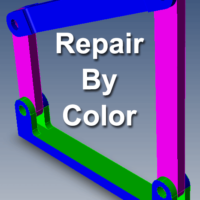
by Brad Strong | Aug 28, 2017 | Blog, CAD Repair, CAD Translation, What's New |
What in the world is Repair By Color, and how could that possibly be useful? During Lite Repair, TransMagic attempts to stitch together surfaces that are near enough to one another to constitute an independent body; if two faces share the same plane, the error “Coincident Faces” can occur. The figure at right is one such example; running Lite Repair on this geometry will lead to the Coincident Faces error. This error is not uncommon since the CAD modeling process often designates the same plane for neighboring parts and bodies. This is possible because the environment is virtual and not real-world. In the real world, there is usually a slight...
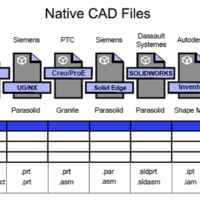
by Brad Strong | Aug 24, 2017 | Blog, CAD Translation, Polygonal Output, What's New |
Being able to read and write a multitude of CAD and polygonal formats increases your flexibility as a company, and widens the range of companies you can deal with. TransMagic allows you to read and write native CAD formats (such as CATIA), geometric modeling kernel formats (such as Parasolid), neutral CAD formats (such as STEP), and polygonal formats (such as STL). Within each of those formats, TransMagic also gives you access to a wide range of versions. Here’s a summary of TransMagic’s supported formats: Native CAD Formats TransMagic can READ AutoCAD (.dwg, .dxf) CATIA (.model, .catpart, .catproduct) Creo (.prt, .asm) Inventor (.ipt, .iam)...
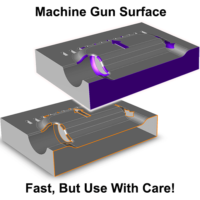
by Brad Strong | Aug 14, 2017 | Blog, CAD Repair, What's New |
Machine Gun Surface replaces missing faces and surfaces until the CAD model is watertight. This a feature that customers have asked for over the years, and now it is finally in TransMagic – and as the graphic says, it’s fast, but using it correctly requires some forethought. Machine Gun Surface is an automatic version of the Find Next & Cover feature found in Advanced Repair, part of the MagicHeal add-on. The benefit of Machine Gun Surface is that, once you hit the button, it will cycle through all openings in a model until it is done, meaning that dozens or even hundreds of surfaces can be added in just a few minutes. But, we highly recommend...

by Brad Strong | Aug 7, 2017 | Blog, CAD Repair, What's New |
Advanced Repair Tools can solve some of the thornier problems of CAD repair, often in just seconds. In the process of translating from one format or CAD system to another, it is not uncommon that some geometry is lost. If you suspect that poor translation is your problem, consider trying TransMagic as your translation solution; however, sometimes the translation is done and you have no other recourse than to repair the model. Advanced Repair Tools are included with TransMagic’s MagicHeal add-on, and allow you to address many of these cases and cover missing surfaces in a variety of ways. The key features of Advanced Repair Tools are Cover Circuit, Cover...
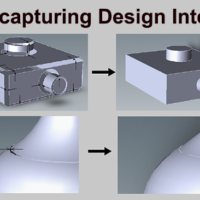
by Brad Strong | Jul 31, 2017 | Blog, CAD Repair, CAD Translation |
When you model a box, you expect the faces to meet at an edge, and when you create a fillet, you expect the surfaces to be tangent. Poor translations can sometimes lead to gaps between surfaces and discontinuities in curved surfaces. That’s where TransMagic’s Full Repair comes in. Full Repair is one part of the MagicHeal add-on; it works to recapture the designer’s original intent for each model. Extending and Reintersecting Edge GeometryAs Figure 1 illustrates, Full Repair enables you to extend and reintersect surface edges to create a cohesive watertight solid (figure exaggerated to illustrate process). Gaps between surfaces can hinder...
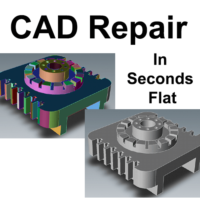
by Brad Strong | Jul 24, 2017 | Blog, CAD Diagnostics, CAD Performance, CAD Repair, CAD Translation, What's New |
All core TransMagic products come with the Auto Repair Wizard and Lite Repair, giving you CAD repair in seconds flat. By default, every model that is opened is evaluated by the Auto Repair Wizard (ARW) to see if it is a watertight solid, and if there are any underlying issues. In the before-and-after image at right, the ‘before’ image has different default colors for each face or surface; this is an indication that you are dealing with an group of surfaces rather than a watertight solid model. In the ‘after’ image, the color of the model is uniform, indicating that the model is a cohesive solid. Red, Yellow or Green Light? Based on what...







